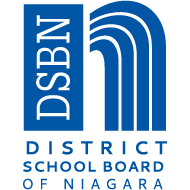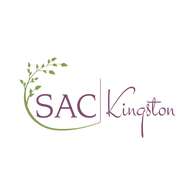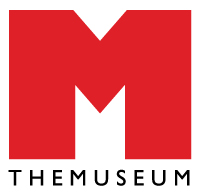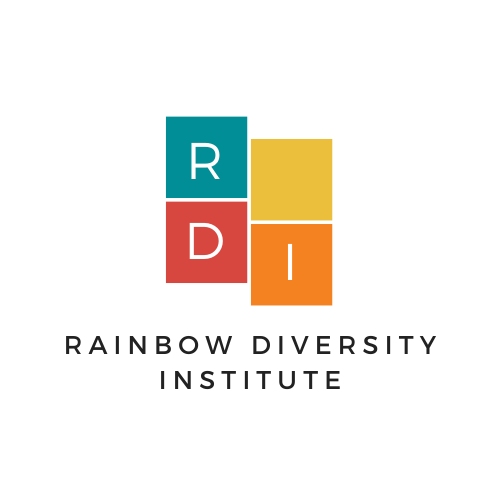CLIENTS

Learn More About Our Clients & How We Can Support You or Your Organization
We can help you, as an individual or corporation, assess your EDI training (Equity, Diversity, and Inclusion) needs. We’ll develop a customized plan including tools and resources to ensure a successful learning and implementation process. We continue to support a variety of industries that each face their own unique challenges and are in need of updated policies and practices.
Corporations
Hiring an equity and inclusion professional will ensure that policies are strategically put in place to improve and maintain the inclusive culture and opportunities of the workplace and benefit the employees as well as the employers. Employees who are fully integrated and have equal participation work will be more invested in being high performers, which will have a direct influence achieving the company’s objectives.
Health Care and Mental Health
Health care and mental health care have become more of a generic offering from companies to their employees and does not service the whole scope of the diverse work community. The misconception that everyone experiences health care the same has provided inequitable benefits to the overall workplace health. ot all genders, cultures, ethnicities etc., have the same physiology and require access to a range of health care and Mental Health services.
For example a racialized woman’s pain in labour is underestimated and often not tended to properly, which causes an increase in the mortality rate in childbirth among women of colour even when they show the same symptoms as their counterparts. The stigma is perpetuated through the school system directly affecting the children with behavioral concerns and they are often prescribed medicine without taking into consideration the long-term effects. This raises the question of whether equity and inclusion training should be included in the education track of healthcare professionals.
Government
On the level of government, equity and inclusion implementation is pertinent, as it affects the way people live and operate as a community. Setting the example will have companies, institutions and organizations align with government regulations. Having someone well-informed, educated and experienced in equity and inclusion implementations will bring an effectiveness and workability to the governing body. When these spaces operate as though systemic oppression does not exist, the language to explain inequitable actions and constructs do not exist either. Without the effective language or mechanisms, frustration may be expressed through aggression when staff and community members are limited. Acknowledging the injustices and the implementation of equitable structures will build a community that functions and that works towards equitable and inclusive resolutions.
Law Enforcement & Criminal Service
The common theme is that the marginalised population, mainly in Canada and the US have more frequent interactions with law enforcement and are more likely to be subject to routine stops and ID checks. The fact is: there is a stigma that is being perpetuated more by law enforcement than the actions of the accused.
The community work that is initiated by law enforcement is heavily focused on isolated acts of kindness, while good, those acts do not help the official function of law enforcement and that is the area where an implementation of equitable action and structures are needed. There is more than enough evidence in the news archives alone to show that the actions of law enforcement are heavily based on stigmas and stereotypes that are not perpetuated in media and isolated situations.
Community , Social, Non-profit Organizations
Non-profit organizations tend to be for the greater good of the community and still lack the full awareness for equitable actions to take when faced with inequitable concerns from the community. The staff generally have the goal of equity and inclusions but lack the knowledge to implement such policies and structures. Companies that deal solely with community are in an essential need for the implementation and practice of equity and inclusion policies. Although the staff of these companies and organizations have the passion that is needed to strive to a better future, they’re not necessarily equipped with the knowledge it takes to implement proper equitable policies.
The results of passion without knowledge runs the risk of being perceived as careless and not thought out. Representing and engaging a community is a responsibility not to be taken lightly and hiring an equity and inclusion counsellor; trainer; coach would be a step in the direction of responsible implementation of equitable policies.
Racialized people who attend the hospital are often misdiagnosed and given ill-prescribed tests and treatments without proper assessment. With biased diagnoses based on stigmas and ill-conceived ideas, doctors and practitioners fail to administer public service to aid their community rather than put them at risk. The application of their medical knowledge is limited with stigmatic ideals.
Misdiagnosis can also result in misplacement of children within schools. Where a black student would sooner be placed in a special education class then diagnosed with ADHD and children from at risk situations would be mis-prescribed medicine for ADHD to improve performance within school without consideration of long term adverse effects.
Media & Culture
It is important to be properly represented in the media where there is a high rate of appropriation within today’s media representation of racialized groups. From Gucci ads to pictures of political figures in black face. It has been perceived as appropriation and thoughtless in terms of the history behind the misrepresentation of black culture. More effort had to be put in place to resolve the issue than it would have taken to be educated in equity and inclusion in the area of Media and culture.
Building organizations and content from ill-conceived notions and ideals will cause the issues listed above and more. Cultural appropriation is less and less common place as the racialized groups are speaking up and making it known that it will not be tolerated. The implementation of equity and inclusion regarding proper representation in media and cultural spaces will benefit organizations and companies profit margins and public engagement.
Education
We know that children are the future and implementing equity and inclusion teachings in the educational system at the grade school level will have a long lasting effect on society and the future of companies, institutions and organizations. Equity would become ingrained in the new generation and become a pillar to uphold the community. At the school board level equity is integral in providing equal opportunity to every student. Low income should not dictate the type of education that a child receives and the opportunities that are available for them.
Child Welfare
There is cause for alarm when looking at North American child welfare outcomes for marginalised youth. While the child welfare system is the epitome of where equity implementations are needed, it does not meet the needs of equity seeking groups. It is important to acknowledge the systemic oppression that is happening to make sure that the proper policies are put in place to make the difference for equity seeking groups. Staying in a neutral part of the situation will not allow for any long-lasting change and will not lead to resolution of systemic problems.
Children of racialized background face the same discrimination as an adult of racialized background would face when being admitted to the hospital. Similar to the education system children of racialized backgrounds are more susceptible to misdiagnosis and ill-prescribed drugs as an immediate fix without taking into account the long term effects.
Here's What Our Clients Are Saying
Anti-Racism, Anti-Oppression training is not overwhelming when you have the most experienced guides in the field. Working with Malissa Bryan PhD student, and Drew Gillette M.Ed. through the Rainbow Diversity Institute gave me the tools and the vocabulary I need to express myself at the board table. Their advice and counsel will be instrumental as all of us work toward a more equitable and diverse education system and just society. Learning is always enriching but navigating this highly customized and personalized training with RDI was also completely captivating and joyful.

As someone with serious concerns about ongoing issues of inequality, discrimination, and bigotry in academia, the formation of a departmental EDI committee is very important to me -- but not something I felt qualified to participate in. RDI's series of workshops helped us discuss departmental priorities regarding our overarching vision, values, mission and mandate, and demystified the process of working towards actionable items and policies for the department. The coordinators were highly knowledgeable, engaged with our specific departmental challenges, and pointed us in the direction of further resources. After working with RDI over the course of several weeks, I feel confident that our group is now equipped to make positive equity-related changes in our department.

RDI was absolutely crucial to the formation of an EDI committee in our department at the University of Guelph. RDI planned and facilitated four sessions to assist us with strategic planning. They brought to these sessions, extensive knowledge, meaningful insight, and invaluable support and leadership. With their help, our group was able to form the important building blocks of our EDI committee’s vision, values, mission and action plan. I am forever grateful for their help and highly recommend them to anyone establishing an EDI committee and/or learning about EDI.


The equity, diversity and inclusion 101 workshop provided a really comprehensive, educational overview and broader understanding of different types of oppression that exist, and this knowledge is key as we step forward. Thank you so much for providing an engaging workshop for our team!

I unfortunately could only attend the first Rainbow Diversity Institute (RDI) session (vision), but it was very informative and encouraging. The RDI Team was very friendly and knew exactly how to summarize our group's thoughts and present it in such a way that was conducive to more thought. I felt nervous going into the session never having done something like that before, but they both made me feel at ease. I can say with confidence that without the help of RDI, our vision, values, mandate, and action plan would not be as organized, clear, concise, and comprehensive as it is now. I would 100% recommend RDI to other organizations trying to establish an EDI committee.

The Rainbow Diversity Institute facilitators struck a perfect balance between provision of guidance and the drawing out & synthesis of ideas, directions and values from our participants. The process was well-paced and fostered bonding within our group. I noticed I was looking forward to every session and being in the space of open, compassionate inquiry that was created. I very much recommend RDI.


RDI walked us through the process step by step of creating the foundation of our new EDI committee. The prompts given to generate discussion around our mission, values, vision, mandate and action plan was really helpful, respectful and inspiring. They were also a great resource for me to learn more about EDI issues.


RDI was essential in helping the School of Environmental Sciences at the University of Guelph establish their Equity, Diversity and Inclusion Committee. When we made the move to establish that EDI Committee, we quickly realized that we needed some guidance in how to do so in an inclusive, respectful and effective manner. RDI provided a series of four workshops that provided the structure and leadership needed by our group. They very effectively synthesized the information that the EDI group brought to them and facilitated turning that unorganized pile of thoughts and ideas into a road map for EDI in the School of Environmental Sciences for years to come. The Rainbow Diversity Institute has my highest recommendation for their professionalism, insights, skills and approach.


